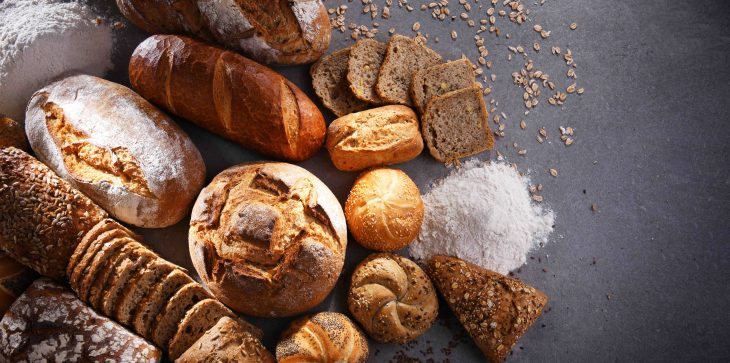
Bread, a staple food consumed in various forms across cultures, has a rich history and holds a special place in our culinary traditions. From the comforting aroma that fills the kitchen to the satisfaction of biting into a freshly baked loaf, bread has a way of capturing our senses and bringing people together. In this article, we’ll explore 11 interesting facts about bread that highlight its journey from ancient times to modern-day tables.
Ancient Origins
Bread has been a dietary staple for thousands of years. Archaeological evidence suggests that bread-making dates back to ancient Egypt around 30,000 years ago, making it one of the oldest prepared foods.
The Symbolism of Bread
Throughout history, bread has held symbolic meaning beyond its nutritional value. It has represented sustenance, community, and even spirituality in various cultures, often associated with notions of sharing and abundance.
Bread Varieties Around the World
Bread comes in countless shapes, sizes, and flavors worldwide. From the baguettes of France to the naan of India, the pita of the Middle East, and the tortillas of Mexico, each culture has its unique bread varieties, reflecting local ingredients, traditions, and tastes.
Bread and Fermentation
One of the key processes in bread-making is fermentation. Yeast or sourdough cultures are used to leaven the dough, allowing it to rise and develop a light and airy texture. This process not only adds flavor but also enhances the digestibility of bread.
The Science of Gluten
Gluten, a protein found in wheat and other grains, plays a crucial role in bread-making. It provides structure and elasticity to the dough, giving bread its characteristic texture. However, some individuals have gluten intolerance or celiac disease and must avoid gluten-containing bread.
Bread and Cultural Traditions
Bread holds deep cultural significance in various traditions. It features prominently in religious ceremonies, such as the Christian Eucharist and the Jewish Sabbath challah. Bread also plays a role in cultural rituals, like breaking bread together as a sign of hospitality and unity.
Artisan Bread-Making

The rise of artisan bread-making has sparked a renewed interest in traditional techniques and high-quality ingredients. Artisan bakers often prioritize slow fermentation, natural leavening, and handcrafted methods to produce bread with distinct flavors and textures.
Bread in Popular Culture
Bread has made its mark in popular culture, becoming a symbol of comfort and nourishment. It features prominently in idioms and expressions like “the best thing since sliced bread” and serves as a source of inspiration for books, movies, and artwork.
The Economics of Bread
Bread has historically played a significant role in economies worldwide. Its affordability and ability to sustain people have made it a vital staple for many societies. Throughout history, bread prices and availability have influenced social and political movements.
Bread Innovations
Bread continues to evolve, with new trends and innovations emerging in the culinary world. From gluten-free bread to plant-based alternatives and creative flavor combinations, bakers and food enthusiasts explore new possibilities to cater to diverse dietary preferences and culinary trends.
Bread as a Cultural Connector
Bread serves as a universal language that brings people together. Whether it’s a shared loaf at a family meal or a local bakery where neighbors gather, bread has the power to connect individuals, bridge cultures, and create lasting memories.
Final Thoughts
Bread continues to be an integral part of our culinary heritage, providing nourishment, comfort, and a sense of community. It’s versatility and cultural significance make it a fascinating subject to explore. So, the next time you enjoy a slice of warm bread, take a moment to appreciate the centuries of tradition and craftsmanship that have gone into creating this beloved food.
Frequently Asked Questions (FAQs)
Is bread suitable for a gluten-free diet?
While traditional bread contains gluten, there are gluten-free bread alternatives made from ingredients like rice, quinoa, and tapioca flour to accommodate individuals with gluten intolerance or celiac disease.
How can I make bread at home?
Making bread at home can be a rewarding experience. There are various recipes available online that guide you through the process, from simple no-knead bread to more complex artisanal loaves.
Can I freeze bread?
Yes, you can freeze bread to extend its shelf life. It’s best to slice the loaf before freezing, allowing you to defrost individual slices as needed.
What is the best way to store bread to keep it fresh?
To keep bread fresh, store it in a cool, dry place, such as a breadbox or a pantry. Avoid storing it in the refrigerator, as this can cause the bread to dry out faster.
Are there any bread alternatives for individuals with grain allergies?
Yes, there are grain-free bread alternatives available that use ingredients like almond flour or coconut flour as a base. These alternatives cater to individuals with grain allergies or those following specific dietary protocols.
Was this page helpful?
Our commitment to delivering trustworthy and engaging content is at the heart of what we do. Each fact on our site is contributed by real users like you, bringing a wealth of diverse insights and information. To ensure the highest standards of accuracy and reliability, our dedicated editors meticulously review each submission. This process guarantees that the facts we share are not only fascinating but also credible. Trust in our commitment to quality and authenticity as you explore and learn with us.


